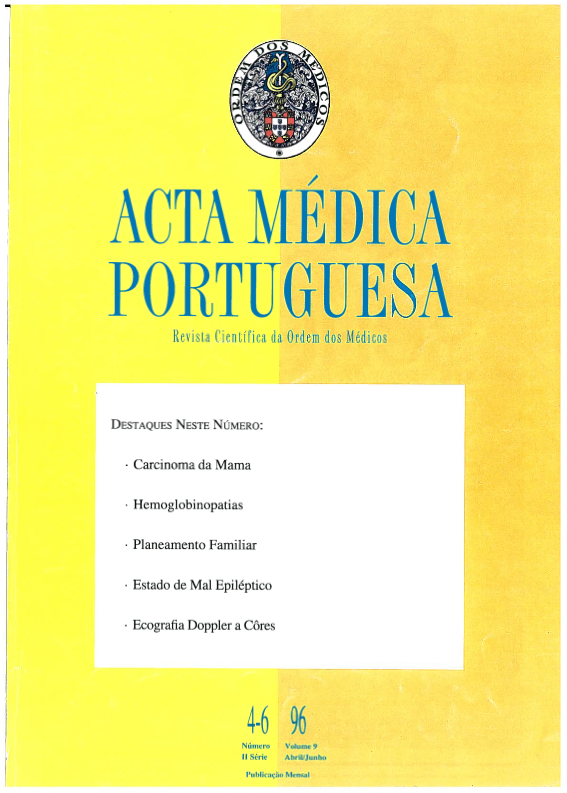Chlamydia trachomatis in family planning. Is screening necessary?.
DOI:
https://doi.org/10.20344/amp.2567Abstract
The authors used cellular cultures obtained from endocervix samples in order to determine the predominant factors of infection caused by Chlamydia trachomatis in a population of 391 women who attended a family planning consultation. The authors studied the relation between the infection and the following variables: age, geographical origin, social class, marital status, history of sexually transmitted diseases (STD), risk behaviours, contraceptive methods and attitudes towards both the disease and therapy. Chlamydia trachomatis was isolated in 7 women (1,8%). The highest infection rates were found in the following categories: women between the ages of 35-40 (4,9%), women who resort to hormonal contraception (3,4%), women between the ages of 20-25 (3,2%) and single women and/or women who do not have a regular partner (2,6%). No statistically relevant relation between the above variables and the infection was found, although a relatively high risk was revealed for women who resort to hormonal contraception (O.R = 7,4). The authors have concluded the following: 1. There is no need to proceed with the systematic universal screening of infection caused by Chlamydia trachomatis in the yearly family planning consultations for the low risk STD populations; 2. Hormonal contraception is a factor to be considered when selecting the women to be screened; 3. The yearly gynaecological supervision of women who attend family planning consultations is an important factor in checking the disease; 4. Information on the couple's attitude towards the disease and therapy is essential in the prevention of relapses.Downloads
Downloads
How to Cite
Issue
Section
License
All the articles published in the AMP are open access and comply with the requirements of funding agencies or academic institutions. The AMP is governed by the terms of the Creative Commons ‘Attribution – Non-Commercial Use - (CC-BY-NC)’ license, regarding the use by third parties.
It is the author’s responsibility to obtain approval for the reproduction of figures, tables, etc. from other publications.
Upon acceptance of an article for publication, the authors will be asked to complete the ICMJE “Copyright Liability and Copyright Sharing Statement “(http://www.actamedicaportuguesa.com/info/AMP-NormasPublicacao.pdf) and the “Declaration of Potential Conflicts of Interest” (http:// www.icmje.org/conflicts-of-interest). An e-mail will be sent to the corresponding author to acknowledge receipt of the manuscript.
After publication, the authors are authorised to make their articles available in repositories of their institutions of origin, as long as they always mention where they were published and according to the Creative Commons license.









